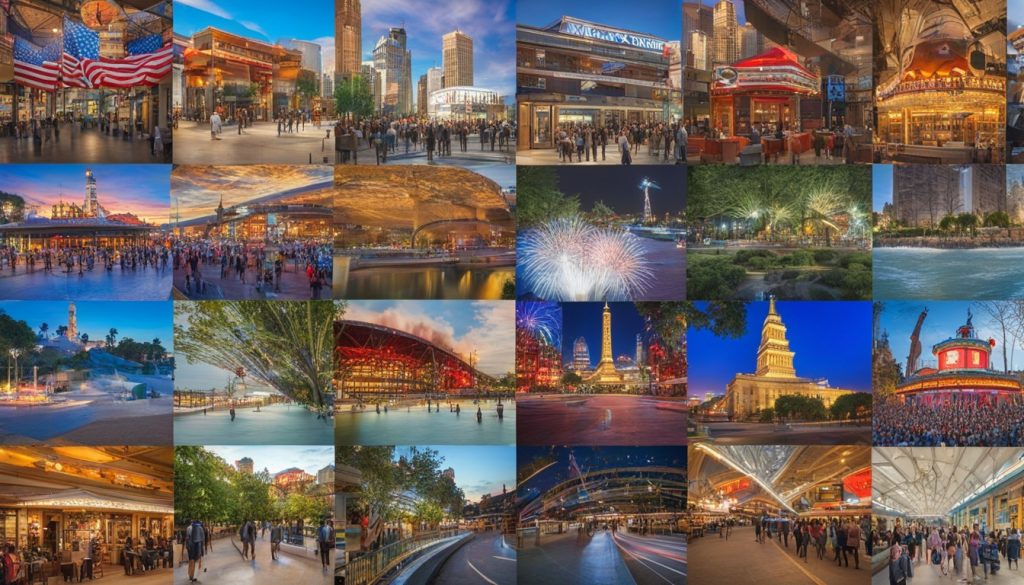Traveling as a US citizen can be thrilling yet challenging. Knowing what visas you need is key to planning your trip. This guide will help you with the info you need for a smooth journey. Whether you want to see historic sites, try new foods, or grow your business abroad, we’ve got you covered.
Key Takeaways
- Discover the essential visa requirements for US citizens across various destinations.
- Learn about the different types of visas and how to determine which one you need.
- Understand the eligibility criteria and application process for obtaining a visa.
- Prepare for your visa interview and ensure a smooth visa approval process.
- Stay informed about visa-free travel options and any restrictions or exemptions.
Planning a trip to China1, Brazil1, or India1? This guide will give you the confidence to handle visa requirements for US citizens. Get ready to explore the world and turn your travel dreams into reality by understanding visa basics.
Understand the Visa Requirements
As a US citizen, knowing the visa requirements for traveling abroad is key to planning your trips2. These requirements change based on where you’re going, why you’re going, and how long you plan to stay. It’s vital to understand these details for a smooth trip.
Do You Need a Visa?
Figuring out if you need a visa is often easy3. Luckily, US citizens can visit 186 countries and territories without a visa or with one upon arrival3. But, some places need US citizens to get a visa before they arrive1. About 10% of countries want a visa for business trips, and another 10% for tourism.
Types of Visas
If you need a visa, there are many types for US citizens, each for a different reason to travel1. You might need a tourist visa, business visa, student visa, work visa, or others. The visa type depends on your trip’s purpose and the country’s rules3. Each visa has its own fees, validity, and rules, so pick the right one for your trip.
| Country | Visa Requirement for US Citizens | Validity Period |
|---|---|---|
| Albania | No visa required | Up to 1 year |
| Algeria | Visa or conditional visa exemption required | Varies |
| Angola | No visa required | Up to 30 days |
| Antigua and Barbuda | No visa required | Up to 6 months |
| Argentina | No visa required | Up to 90 days, extendable to 180 days |
Even if your country lets US citizens in without a visa, there might be other rules, fees, and limits3. Always do your homework and keep up with visa policies for your destination for a smooth trip.
Eligibility Criteria
Applying for a US visa requires knowing the specific rules of the country you’re visiting. You must pick the right visa type and meet certain requirements. These include having a valid passport, proof of money, plans to return, and sometimes a clean criminal record4. Not meeting these criteria can lead to your visa being denied. It’s key to check and fulfill all the requirements carefully.
The number of immediate relatives of a U.S. citizen who can get a Green Card is a key factor4. Other important factors include the percentage of doctors who can get a Green Card, the number of immigrant investors, and the percentage of abused children who qualify4.
Also, the number of people eligible for a Green Card through refugee or asylee status matters. So does the proportion of human trafficking victims, diversity visa winners, and Lautenberg parolees4.
Knowing and fulfilling these criteria is vital for a visa application to succeed. By reviewing the requirements and providing all needed documents, US citizens can boost their chances of getting the visa and having a smooth trip4.

Visa rules and criteria differ a lot between countries3. As of 2024, a US passport lets you visit 186 countries and territories without a visa or with one upon arrival3. The US passport ranks 8th in travel freedom and 8th in the Global Passport Power Rank3.
Yet, US citizens may face different visa processes for each country. This includes various application conditions, residency permits, and registration upon arrival in some places3. For example, some countries require visas, while others don’t. The stay duration varies, and some countries ask for proof of funds, return tickets, and vaccinations3.
| Visa Category | Eligibility Criteria |
|---|---|
| Extraordinary Ability | Demonstrating extraordinary ability in various fields like sciences, arts, education, business, or athletics5. |
| Outstanding Professors and Researchers | Having at least 3 years of experience in teaching or research, meeting 2 out of 6 specified criteria, and possessing international recognition for achievements in an academic field5. |
| Certain Multinational Manager or Executive | Having worked outside the U.S. for at least 1 year, and the U.S. petitioner must have been doing business for at least 1 year, with no labor certification required5. |
By understanding and meeting the specific eligibility criteria for the visa you want, US citizens can improve their chances of a successful application and a trouble-free trip5.
visa requirements for US citizens
Visa-Free Travel
As American citizens, you’re lucky to have visa-free or visa-on-arrival access to many places worldwide6. This lets you enter certain countries without a visa before your trip. But, you still need to meet entry requirements, like having a valid passport and proof of onward travel7. It’s key to check visa-free travel options for your destination for a smooth trip.
US citizens don’t need a visa for short visits to some countries6. When going to Japan, you can use the Electronic Customs Declaration Gates (e-Gates)6. But, remember to know what items are banned in Japan and get an “importation certificate” for more than allowed medicine6.
When visiting Canada, US citizens must have a valid US passport7. If you’re a lawful permanent resident, show your passport and green card for travel to Canada from April 26, 20227.
Tourists from non-Schengen countries, like the US, need a passport stamp when arriving in Italy8. If you’re in Italy for over three months, get an entrance visa before you go. For stays over 12 months, you must sign an integration agreement and meet certain goals8.

Dealing with us visa requirements, us passport requirements, and us travel documents can be tough. But knowing about us visa-free travel options can make your trips easier and fun. Plan ahead and stay informed for a stress-free journey and great global adventures.
Application Process
The US visa application process changes based on the visa type and where you apply. You’ll need to fill out an application, have a valid passport, gather supporting documents, and pay the visa fees9.
https://tunekong.com/sustainable-living-outdoors-eco-friendly-hacks-to-save-money-and-nature-11/
Required Documents
For a US visa, you might need many documents. These depend on the visa type. You could need proof of travel plans, money, job info, and more to show you’re eligible9. Make sure to check the specific needs of your destination country for a successful application.
Some common documents for a US visa include:
- A completed visa application form
- A valid passport with enough validity
- Proof of financial resources, like bank statements or job info
- Evidence of ties to your home, like a job or family
- Travel plans or itinerary, if needed
- Supporting documents, such as school records or business licenses
The visa fees for different visas vary a lot. Here are the latest fees:10
| Visa Category | Visa Fee |
|---|---|
| B1/B2, F, J, and non-petition based visas | USD 185 |
| H, L, O, P, Q, and R category visas | USD 205 |
| E3 category visa | USD 315 |
The visa validity and how long it takes to process can change based on the visa type and where you’re from9. It’s key to look into the specific needs and fees for your visa to make the process easier.
Conclusion
Getting through the visa requirements for US citizens can look tough, but it’s easier with the right info and prep. Knowing about the US visa types, who can get them, and how to apply makes planning trips abroad simpler. This is true for trips for work, fun, or staying abroad for a while11.
It’s key to know what US passport requirements and US travel documents you need for your trip. Being ready and taking the right steps lets US citizens travel the world and see places they’re curious about11.
The rules for US visa eligibility and the US visa application process change based on why you’re traveling. Knowing what you need and the costs can make applying easier. But remember, a US visa doesn’t mean you’re definitely coming into the US. Always use your US passport when entering and leaving the country11.
FAQ
Do I need a visa as a US citizen?
The need for a visa depends on where you’re going, why you’re going, and how long you plan to stay. Some places need US citizens to get a visa. Others let you in without one or give it to you when you arrive.
What are the different types of visas for US citizens?
US citizens can get different visas like tourist, business, student, or work visas. The visa type depends on your trip’s purpose and the country’s rules.
What are the eligibility criteria for US citizens to obtain a visa?
To get a visa, US citizens must meet certain requirements. This includes having a valid passport, showing you have enough money, proving you’ll leave the country, and sometimes, a clean criminal record.
Which countries offer visa-free travel for US citizens?
Many places let US citizens visit without a visa or give it to them when they arrive. But, you still need to have a valid passport, proof of travel plans, and enough money for your trip.
What is the visa application process for US citizens?
Getting a visa varies by country and visa type. Generally, you fill out an application, provide a valid passport, gather needed documents, and pay the visa fee.

